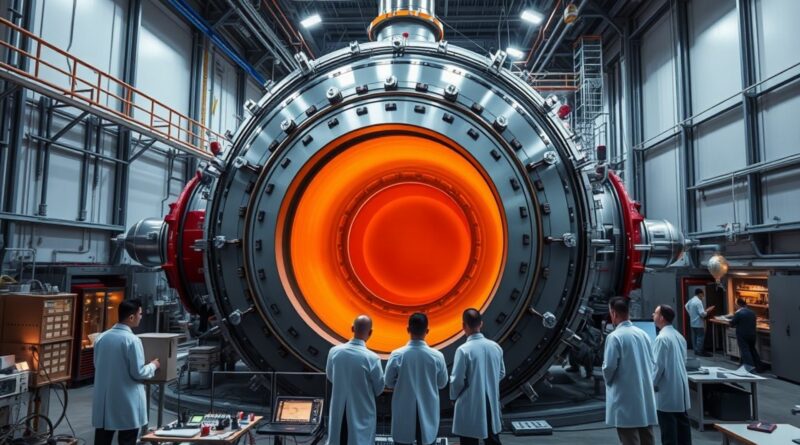China’s “Artificial Sun” Shatters World Record
In a groundbreaking achievement that could redefine the future of energy, China’s Experimental Advanced Superconducting Tokamak (EAST), often referred to as the “artificial sun,” has set a new world record by maintaining a steady-state high-confinement plasma operation for an astonishing 1,066 seconds. This milestone, achieved on January 20, 2025, marks a significant step forward in the global quest for sustainable fusion power generation.
Located in Hefei, Anhui Province, EAST is a cutting-edge fusion research device designed to replicate the nuclear fusion process that powers the sun. The recent breakthrough, achieved by the Institute of Plasma Physics under the Chinese Academy of Sciences (ASIPP), far surpasses the previous record of 403 seconds set by EAST in 2023.
Why 1,000 Seconds Matters
The 1,000-second threshold is a critical benchmark in fusion research. Sustaining plasma at ultra-high temperatures—over 100 million degrees Celsius—for extended periods is essential for achieving the stability and controllability required for practical fusion power generation. According to Song Yuntao, Director of ASIPP, “A fusion device must achieve stable operation at high efficiency for thousands of seconds to enable the self-sustaining circulation of plasma, which is critical for the continuous power generation of future fusion plants.”
This latest achievement brings humanity closer to harnessing fusion energy, a virtually limitless and clean energy source that could revolutionize power generation and even enable space exploration beyond our solar system.
Upgrades and Innovations
The success of EAST is the result of years of relentless innovation and upgrades. Gong Xianzu, head of the EAST Physics and Experimental Operations division, highlighted significant improvements to the device’s systems. For instance, the heating system, which previously operated at the equivalent of nearly 70,000 household microwave ovens, has now doubled its power output while maintaining stability and continuity.
Since its inception in 2006, EAST has served as an open test platform for both Chinese and international scientists, fostering collaboration and advancing fusion research. China’s participation in the International Thermonuclear Experimental Reactor (ITER) program, the world’s largest magnetic confinement plasma physics experiment, further underscores its commitment to global fusion energy development.
A Global Effort for a Sustainable Future
Fusion energy has long been hailed as the “holy grail” of clean energy. Unlike nuclear fission, fusion produces no long-lived radioactive waste and relies on abundant fuel sources like hydrogen isotopes. However, achieving controlled fusion has been a monumental challenge, requiring decades of research and collaboration.
EAST’s recent success not only sets a new standard for fusion research but also provides valuable insights for the construction of future fusion reactors, including ITER and China’s own Fusion Engineering Test Reactor (CFETR). “We hope to expand international collaboration via EAST and bring fusion energy into practical use for humanity,” said Song Yuntao.
The Road Ahead
In Hefei, where EAST is located, a new generation of experimental fusion research facilities is already under construction. These facilities aim to accelerate the application and development of fusion energy, bringing the dream of a sustainable, clean energy future closer to reality.
As the world grapples with climate change and the urgent need to transition away from fossil fuels, breakthroughs like this offer a glimmer of hope. China’s “artificial sun” has not only illuminated the path to fusion energy but also demonstrated the power of human ingenuity and international cooperation in tackling some of the greatest challenges of our time.
Stay tuned as we continue to follow this exciting journey toward a brighter, cleaner energy future.



